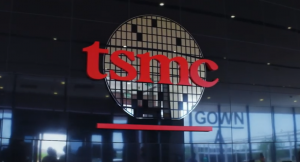What’s So Impressive About Apple Selling 2M iPhone 5’s Over 3 Days in China?
![]() Apple’s been itching to open up shop in China where their massive smartphone market is untapped as far as the iPhone goes. And the Chinese have been just as anxious. In its first three days in stores, the iPhone 5 sold more than two million units, making it the fastest-selling iPhone to date. Before their China launch, analysts doubted such success since Apple cut orders for the iPhone 5 from suppliers to balance excess inventory – meaning analysts didn’t expect the Chinese market to be so welcoming of the iPhone 5 as other markets.
Apple’s been itching to open up shop in China where their massive smartphone market is untapped as far as the iPhone goes. And the Chinese have been just as anxious. In its first three days in stores, the iPhone 5 sold more than two million units, making it the fastest-selling iPhone to date. Before their China launch, analysts doubted such success since Apple cut orders for the iPhone 5 from suppliers to balance excess inventory – meaning analysts didn’t expect the Chinese market to be so welcoming of the iPhone 5 as other markets.
But lo and behold, Apple sold two million units over the weekend and they expect to sell more, aiming to make the iPhone 5 available in 100 countries by the end of the year. But is two million really that impressive for Apple?
A Tiny Stake in Chinese Market
Analysts have different takes on the number Apple has posted, but Apple’s shares have significantly dropped since December, so news of their two million sale in China could alleviate investors’ concerns that iPhones are no longer in demand. Apple’s also confident that more iPhone 5’s will be sold in China as iPhone users want to upgrade.
“Recall, Apple launched the iPhone 5 in China on Friday (12/14) and given the lackluster lines, there was growing concern around demand for this new iPhone,” Topeka’s Brian White said. “Clearly, this view turned out to be incorrect as this represents a big print for Apple and the first time the Company ever issued a post-launch press release for iPhone sales in China.
“With the Chinese New Year beginning on February 10 and shopping season starting in January, Apple has the two hottest products (i.e., iPhone 5 and iPad mini) in the world available for the Chinese consumers… We have previously indicated that we expected a big uptick in China demand with the iPhone 5 as we believe both iPhone 4 and iPhone 4S owners will upgrade. The strong iPhone 5 sales this weekend support our view. The key reason is status. In our view, a new form factor shows the world that you have the latest and greatest iPhone, a sign of status in China.”
But Anna Leach of The Register pointed out that given the population of China, two million is not that impressive. With China’s population of 1.3 billion, two million is just 0.15 percent, or one in 667 people who bought the iPhone 5. It’s not that they are disinterested in owning a smartphone, but it’s because they have more smartphones to choose from from local brands who offer cheap smartphones comparable to the iPhone’s best features.
Stretching Apple’s Global Reach & Influence
![]() ISI’s Brian Marshall countered Leach’s claims by stating that Apple was able to sell more in the Chinese market compared to other markets like the US, since they managed to sell two million units in just three days compared to the 5 million units sold in the US, Australia, Canada, France, Germany, Hong Kong, Japan, Singapore and the UK combined in its first weekend of sales.
ISI’s Brian Marshall countered Leach’s claims by stating that Apple was able to sell more in the Chinese market compared to other markets like the US, since they managed to sell two million units in just three days compared to the 5 million units sold in the US, Australia, Canada, France, Germany, Hong Kong, Japan, Singapore and the UK combined in its first weekend of sales.
“We view this as a very strong launch, particularly in light of a relatively limited 3G subscriber base in China,” Marshall stated. “For comparison, recall AAPL had sold over 5mil iPhone 5 units in the weekend of its launch in the U.S. and 8 other developed markets. We estimate ~2mil iPhone 5 units were sold at U.S. carriers (T, VZ, S) in the first 10 days of launch or ~1.0% penetration of a post-paid subscriber base of ~200mil. In a shorter time span of just 3 days, AAPL sold over 2mil units at China Unicom and China Telecom, or ~1.5% penetration of a ~130mil 3G subscriber base. In our view, this suggests potential for subscriber penetration in China could be similar to that of developed countries despite per capita GDP that is less than 1/5 of the U.S.”
As for the reduced production of iPhone 5s, Piper Jaffray’s Gene Munster stated that this was not a new occurrence since suppliers generally reduce production after the release of a new device which means it doesn’t actually affect the current supply of devices.
“[S]uppliers reduce production in the quarter following a new iPhone release,” Munster stated. “While some suppliers suggest a 20-30% q/q step down in March, it is difficult to say what inventory already exists in the channel to make an assumption on March units.”
How Can Apple Sell More iPhones in China?
He also added that in order for Apple to effectively penetrate all markets, they need to introduce lower priced devices, and he expects Apple to do so in 2014 or even earlier.
While diverse pricing could help Apple become more competitive in the Chinese market, working some partnerships with local telecoms could help as well. With his breaking analysis on this idea is contributing editor John Cassaretto. See his full analysis in the video below, from this morning’s NewsDesk segment with Kristin Feledy:
A message from John Furrier, co-founder of SiliconANGLE:
Your vote of support is important to us and it helps us keep the content FREE.
One click below supports our mission to provide free, deep, and relevant content.
Join our community on YouTube
Join the community that includes more than 15,000 #CubeAlumni experts, including Amazon.com CEO Andy Jassy, Dell Technologies founder and CEO Michael Dell, Intel CEO Pat Gelsinger, and many more luminaries and experts.
THANK YOU















